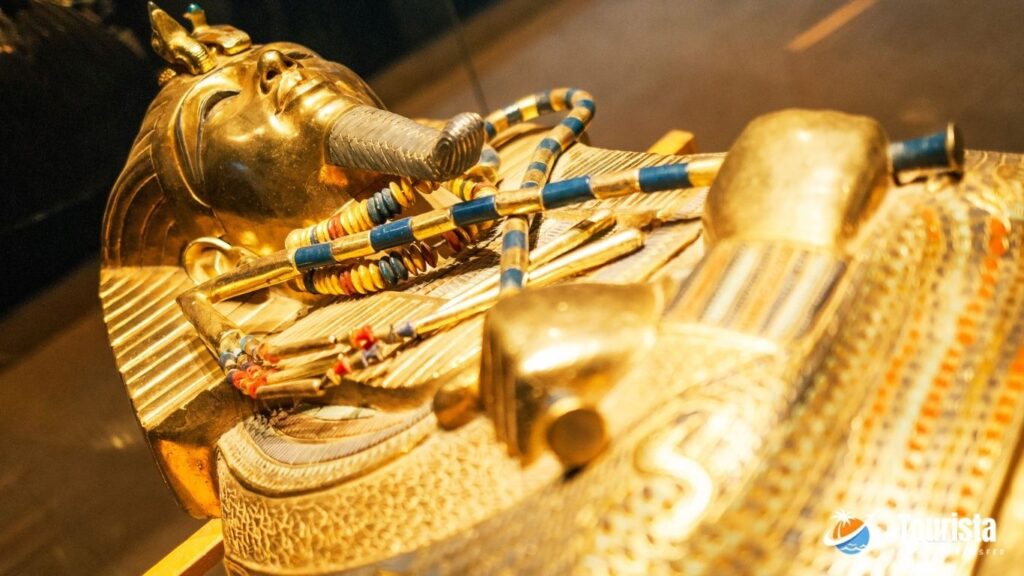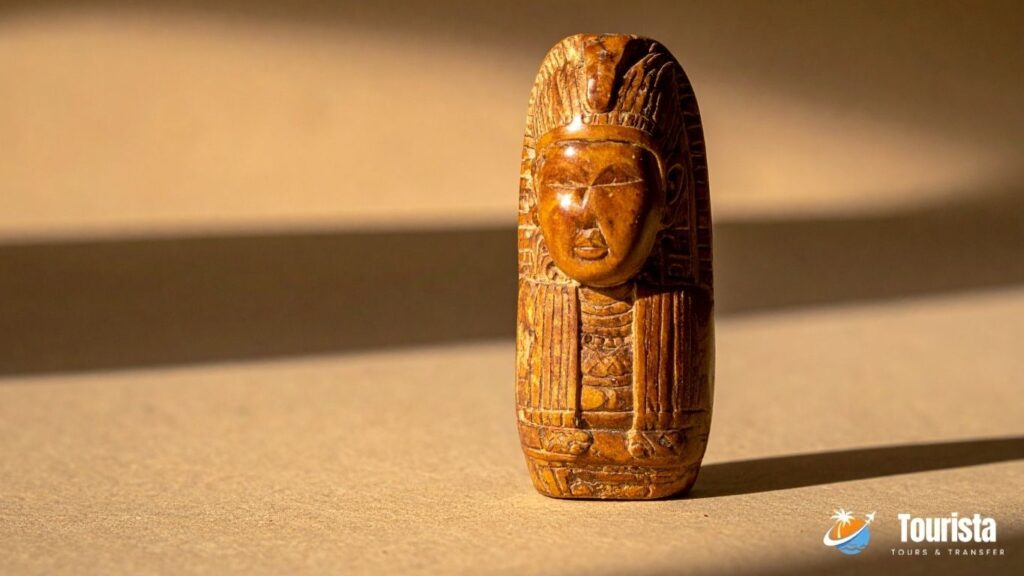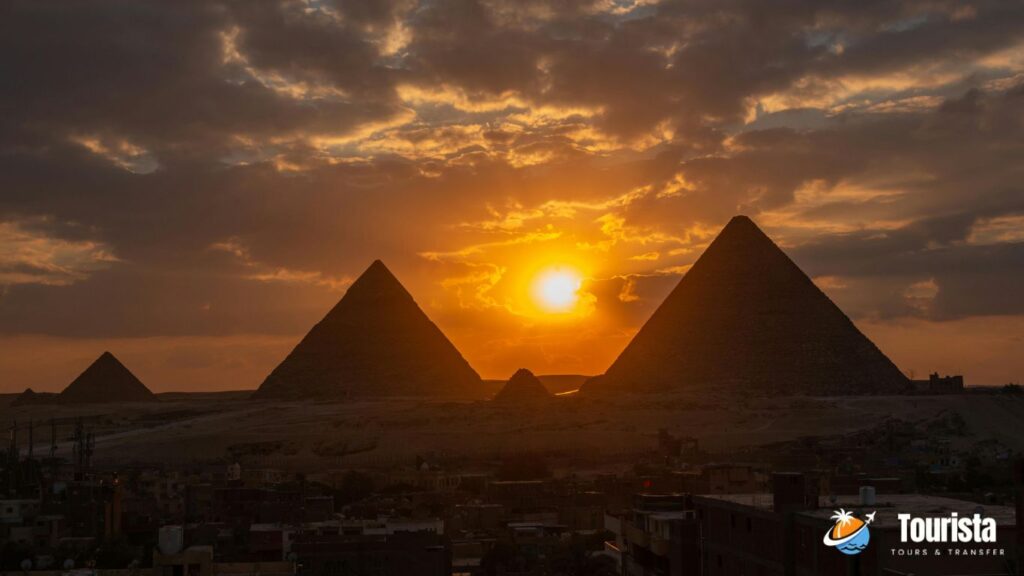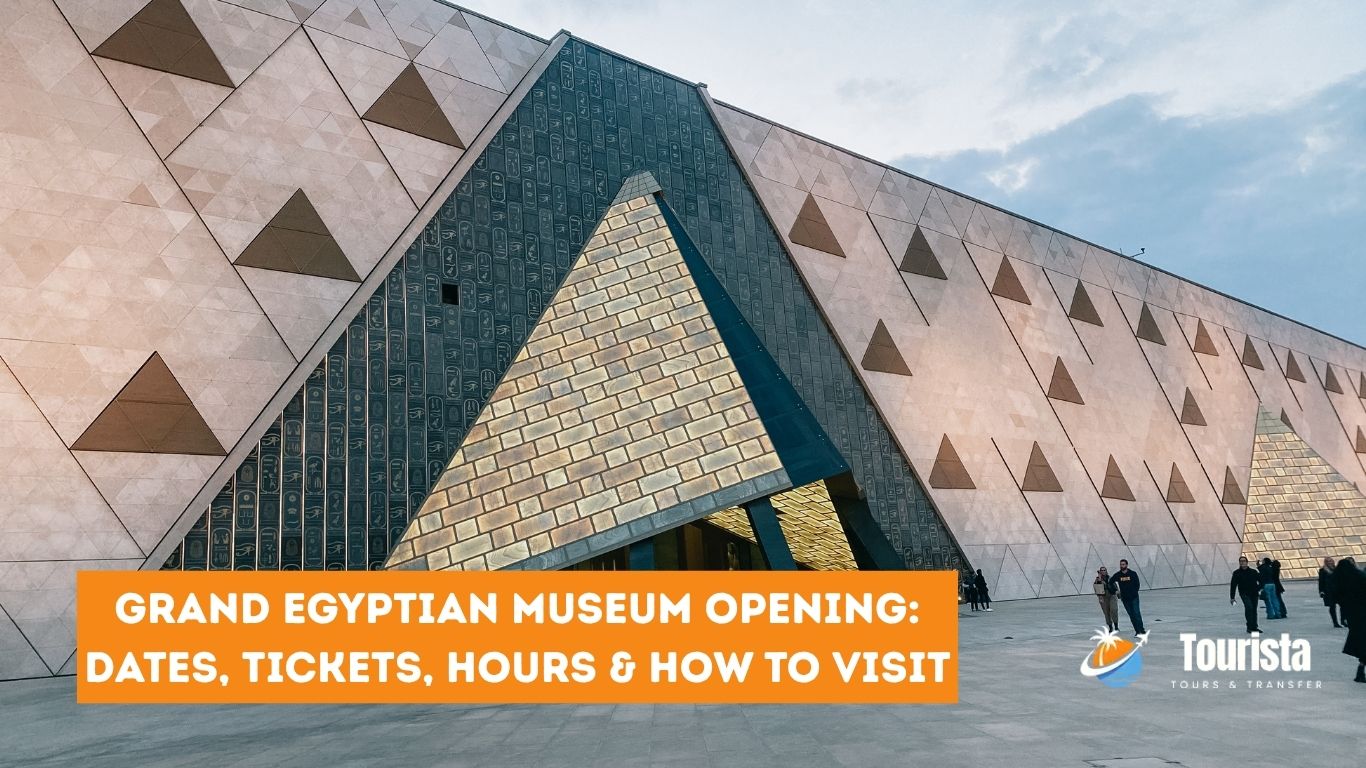Grand Egyptian Museum Opening: Dates, Tickets, Hours & How to Visit
The grand Egyptian museum opening is finally here. The official opening ceremony is set for 1 November, with public entry starting 4 November. If you’re planning a trip to Cairo—or a day tour from Hurghada, Marsa Alam, or Luxor—this guide will help you lock in tickets, pick the best time to visit, and see the highlights without stress. The GEM sits beside the Giza Pyramids, so you can easily combine both in one unforgettable day.
Why all the buzz? The Grand Egyptian Museum is the world’s largest museum dedicated to a single civilisation. It brings together thousands of artefacts under one roof, including the full Tutankhamun collection displayed in a modern, climate-controlled space. You’ll walk into a huge light-filled atrium where the colossal statue of Ramses II greets you, then move through galleries that use smart lighting, clear wayfinding, and gentle ramps—great for families, older visitors, and anyone who wants a calm, well-organised visit.
Let’s get the basics straight. The grand Egyptian museum opening week will be busy. Tickets should be bought online from the official site to secure your date and entry time. You’ll pass through airport-style security, so keep bags light and avoid restricted items. Allow extra time at the entrance, especially in the first month. Inside, expect wide corridors, lifts, and rest areas. There are cafés, gift shops, prayer rooms, and clean facilities. Card payments are widely accepted, but a small amount of cash is handy for taxis and tips.
If you’re coming from the Red Sea, the GEM is very doable in a day with a private transfer or a guided Cairo day tour. A typical plan is an early start, museum visit first (cooler, quieter), lunch, then the Pyramids and Sphinx in the afternoon. From Luxor or Aswan, you can fly or take an overnight trip that adds Cairo’s top sights. Either way, bring a hat, sunscreen, and a refillable bottle—Cairo can be warm even in winter, and you’ll be on your feet.
What about timings and crowds? Mornings are best for the main galleries and the Tutankhamun rooms. If you prefer emptier spaces, aim for late afternoon and linger until close; golden hour around the Pyramids is magic. Photography rules are strict in some rooms, so check signs and follow staff guidance. Dress is casual and modest; comfy shoes are essential. For families, a lightweight stroller is fine—paths are smooth and staff are helpful.
At a glance:
- Where: Giza Plateau, near the Pyramids
- When: Ceremony 1 Nov, public entry from 4 Nov
- Book: Official online tickets only
- Plan: GEM first, Pyramids second for easy logistics
- Allow: 3–4 hours inside the museum, plus travel time

Grand Egyptian Museum opening — what’s confirmed
Here’s the clear picture so far. The Grand Egyptian Museum opening has two parts: an official inauguration ceremony on 1 November, followed by public opening from 4 November. Multiple outlets and the museum’s own site align on this split: ceremony first, then ticketed public entry. The GEM’s homepage even carries a banner stating “Official Grand Opening on November 1. Opening to the public on November 4,” which matches wider reporting.
Opening hours in the first days. The official site lists current timings and how they extend from early November. In brief: the GEM Complex (the grounds, services and non-gallery areas) runs 08:30–19:00, while Galleries operate 09:00–18:00 with last ticket purchase at 17:00. From 4 November on selected days (Saturday and Wednesday), the museum extends into the evening: Complex 08:30–22:00, Galleries 09:00–21:00, last ticket 20:00. This is especially handy if you want to do the Pyramids first and then enjoy the museum in cooler hours. Always check the ticketing page for any date-specific adjustments.
What’s actually open on day one? The Grand Egyptian Museum opening includes the headline galleries, with star artefacts like the Ramses II colossus, the Khufu solar boat, and—most talked about—the full Tutankhamun collection presented together in purpose-built rooms. These elements are repeated across reputable reports and previews, underlining that the GEM is designed as the world’s largest museum devoted to a single civilisation, with vast exhibition space and cutting-edge conservation labs.
Tickets and slots. You’ll need to book online for a specific date and time. The official ticketing portal handles this, and time slots are clearly shown before checkout. If you’re travelling in the first two weeks after the Grand Egyptian Museum opening, expect the most popular slots (mid-morning and early afternoon) to go first. Late afternoon and early evening (where available) are a smart pick if you want more breathing room.
Security and operations. Authorities have flagged an “unprecedented security plan” for the inauguration period, including rehearsed deployment and medical readiness near the Giza Plateau. This means you should allow extra time for entrance checks, keep bags minimal, and carry ID. On the plus side, these measures usually make queueing more orderly once you reach the gates.
Bottom line:
- 1 November: ceremony day (special programme; dignitaries and invited guests).
- From 4 November: public visits with timed tickets; extended evening hours on specific days.
- Book early: use the official site only; watch for high demand in week one.

Tickets, hours, and on-the-day logistics
Book online only. To avoid queues and sell-outs in the first weeks after the grand Egyptian museum opening, buy your ticket through the official GEM website. Choose your date and entry time first, then complete payment. Screenshots of bookings aren’t enough at the door—have your QR/e-ticket ready on your phone (and carry ID that matches the booking name).
Pick the best time slot. Early morning is calmest for the Tutankhamun rooms; late afternoon/early evening (on extended days) is great if you’re pairing the GEM with the Pyramids first. Check the latest opening hours and any evening extensions on the official page just before you travel, as timings can change around inaugural events.
Security and what to bring. Expect airport-style checks outside the gates. Authorities have flagged an unprecedented security plan around the inauguration, so allow extra time and keep bags small. Read the latest update here: Unprecedented security plan to secure Grand Egyptian Museum opening. Pack light: phone, power bank, water bottle, sun hat, and a light layer for air-conditioned galleries. Avoid sharp objects and large tripods; follow staff guidance on photography in sensitive rooms.
How long to allow. Plan 3–4 hours inside for highlights at an easy pace. If you’re a deep-dive museum fan, budget half a day. Add transfer time from central Cairo or Giza (traffic can be busy at peak times).
Tickets for families and groups. The GEM is purpose-built: wide corridors, lifts, and clear wayfinding make it friendly for prams and wheelchairs. If you’re travelling with young children, choose a mid-morning slot with a snack break in the café; save the denser galleries for when they’re rested. For group visits, the lead traveller should carry the booking plus a list of guest names to speed up checks at the entrance.
Payment and refunds. Buy on the official site only. Bank cards are widely accepted; if a card fails online, try a second card or a different browser/session. For changes, use the contact details on your booking confirmation—policies can vary around launch dates.
Photography and must-see pieces. Some areas have restrictions; look for signs and always ask staff if unsure. If you want to understand the incredible work behind the displays—cleaning, conserving and mounting delicate artefacts—this feature gives brilliant context: Artisanal skill at its finest.
If you’re combining GEM + Pyramids in one day:
- Do the GEM first in the cool morning, then head to the Giza Plateau for the Pyramids and Sphinx.
- Pre-book your ride or tour so your driver meets you at the exit; Cairo traffic is real, and you’ll save time.
- Keep a bit of cash for taxis/tips even if you pay for tickets by card.
Quick checklist before you go
- Ticket and QR saved to phone (plus offline copy).
- Passport or photo ID.
- Comfortable shoes, modest dress, hat, sunscreen.
- Power bank and water bottle.
- Arrive 30–45 minutes before your slot during the opening weeks to clear security smoothly.

What’s inside: must-see galleries and star pieces
The grand Egyptian museum opening brings a once-in-a-lifetime line-up under one roof. Here’s how to see the icons without zig-zagging or missing the good stuff.
Start in the Grand Hall: Ramses II welcomes you
Your visit begins in the vast atrium where the colossal Ramses II stands beneath a flood of natural light. It’s the perfect meeting point and photo spot before you enter the ticketed galleries. From here, clear signs lead to the exhibitions, cafés, and facilities. For a quick primer before you go, skim the official GEM site.
Tip: Snap your wide shots here, then put the phone away for the first ten minutes and just take in the scale—it sets the tone for the day.
Tutankhamun, finally complete in one place
For the first time, the Tutankhamun collection is displayed together in purpose-built rooms with modern lighting and showcase tech. Expect jewellery, funerary goods, chariots, and delicate textiles arranged so you can follow the boy-king’s life and burial story step by step. Conservation teams spent years stabilising, cleaning, and mounting fragile pieces—if you’re curious about the craft behind it, read this excellent feature: Artisanal skill at its finest.
How to do it well (45–60 mins):
- Walk the rooms in order; they’re designed as a narrative.
- Pause at smaller cases—labels are short, friendly, and worth the minute.
- If it’s busy, circle back near closing time for a calmer look.
Khufu’s solar boat: engineering in cedar
Seeing the Khufu (Cheops) solar boat in person is a jaw-dropper. Over 40 metres long and thousands of years old, it shows off ancient joinery and shipbuilding in crazy detail. The viewing platform lets you take in the hull lines without crowding. Save a few minutes to read the build/restore notes—this is where the GEM’s conservation focus shines.
Tip: Use your phone’s wide lens from the platform level for a clean, curve-true shot.
The civilisation story: Old to Late Period in a clean flow
Beyond the headline pieces, galleries trace Egypt from the Predynastic period through to the Late and Greco-Roman eras. Expect bite-size labels, accessible layouts, and frequent rest spots. The best approach is to pick a time anchor (for example, “everything from Old Kingdom to New Kingdom in 40 minutes”) so you don’t burn out before the final rooms.
Don’t miss:
- Everyday objects (cosmetics, tools) that make the pharaohs’ world feel human.
- Stelae with crisp hieroglyphs—great for spotting repeated symbols once you know what to look for.
- The “materials” displays showing stone, wood, gold, and pigments side by side.
Tech that helps without getting in the way
Projection, gentle sound design, and interactive points are used sparingly to support, not distract. Wayfinding is strong, lighting is easy on the eyes, and ramps/lifts keep everything step-free. If you want to check current gallery access or any temporary closures before your date, use the official GEM page.
Photography rules (and good manners)
Some rooms limit flash or all photography; signs are clear and staff will guide you. A small phone gimbal is usually fine, but large tripods are not. Keep voices low in the Tutankhamun spaces—sound carries more than you think.
A smart route for first-timers (about 2.5–3 hours total)
- Grand Hall (10 mins): Ramses II and orientation.
- Tutankhamun suite (50–60 mins): go early or late.
- Civilisation spine (45 mins): Old → Middle → New Kingdom highlights.
- Khufu solar boat (20–30 mins): end on a high.
- Café + shop (15–30 mins): water, snack, and a postcard for home.
If you want to read more on the operational side and the scale of preparations around opening week, this update is useful: Unprecedented security plan to secure Grand Egyptian Museum opening.
How to visit from Hurghada, Marsa Alam, Luxor & Aswan
Seeing the grand Egyptian museum opening while you’re based in the Red Sea or Upper Egypt is totally doable. Pick the route that matches your time and comfort level.
From Hurghada
Fastest: fly to Cairo (CAI) in the early morning, meet a pre-booked driver/guide, visit the GEM first, then the Pyramids and Sphinx in the afternoon, and fly back in the evening. Door-to-door it’s a big day, but smooth.
By road: a private car/van takes roughly 5–6 hours each way (traffic and checkpoints can add time). If you don’t like early flights, this is the simplest door-to-door option.
Smart plan:
- Aim to reach the GEM gates 15–30 mins before your time slot.
- After the museum, head to the Giza Plateau for sunset views.
- Keep your return window flexible in case of Cairo traffic.
From Marsa Alam
Fastest: fly via Cairo (CAI). If flight times don’t line up well, consider an overnight in Cairo: GEM + Pyramids on Day 1, Museum of Egyptian Civilisation/Old Cairo on Day 2.
By road: expect 7–8.5 hours each way in a private vehicle. It’s long, so most travellers choose either a guided fly-in day trip or a 1-night Cairo break.
Pro tip: if you’re tight on time, do the GEM first, then a short Panorama stop at the Pyramids (great photos, minimal walking).
From Luxor
Fastest: early flight to Cairo, private transfer to Giza (allow 60–90 mins to reach the GEM from CAI depending on traffic).
Train option: there are day and overnight trains to Giza/Cairo; add a private transfer on arrival to keep timing crisp. This works best if you’re staying a night in Cairo.
One-day rhythm: GEM (3–4 hrs) → lunch → Pyramids & Sphinx → evening flight/train back.
From Aswan
Best: fly to Cairo and plan a gem-first morning. As with Luxor, trains exist but make more sense if you’re adding a Cairo overnight.
Tip: if your flight lands mid-morning, consider flipping the order: quick lunch → Pyramids → GEM late afternoon (calmer galleries, cooler temperatures).
Private car vs guided day tour
- Private car/driver: maximum flexibility, choose the order, pause for breaks when you like.
- Guided tour: timed pickups, skip-the-faff logistics, and a licensed guide to keep the museum route tight and engaging.
- Mix & match: book flights yourself, then a Giza-side driver/guide for the day.
Realistic timings (fly-in day from the Red Sea)
- 04:30–05:30: hotel pickup → airport check-in
- 07:00–08:00: land in Cairo, meet driver
- 09:00–12:30: GEM (arrive early for your slot)
- 13:00–14:00: lunch near Giza
- 14:30–16:30: Pyramids & Sphinx
- 18:00–20:00: airport and flight back
What to book in advance
- GEM tickets on the official site for your exact date/time
- Airport transfers in Cairo (hotel → GEM → Pyramids → airport)
- Domestic flights that give you at least 12–14 hours in Cairo for a relaxed pace
Packing & comfort list
- Passport/ID (matches your ticket name), e-ticket/QR for the GEM
- Comfortable shoes, hat, light scarf or layer
- Refillable bottle and a power bank
- A small daypack only (security is airport-style)
- Snack for the ride if you’re driving in from the Red Sea
Accessibility & families
The GEM has wide paths, lifts and clear signage. Strollers and wheelchairs are fine. Plan a mid-visit café break and leave the densest galleries for when the kids are fresh. If you’re using a car seat for little ones, confirm with your driver before pickup.
Accessibility, families, and practical tips
The GEM has been designed for comfort and simple wayfinding, so most visitors—families with buggies, older travellers, wheelchair users—can move around with ease. Here’s how to make the grand Egyptian museum opening week feel smooth from door to door.
Access & mobility
- Step-free routes: Galleries, cafés and shops are connected by wide, gently sloped paths and lifts. If you need assistance, ask at the entrance; staff will point you to the nearest lift or resting area.
- Wheelchairs & strollers: Surfaces are smooth and level. If you prefer to confirm equipment availability in advance, check the official GEM website the day before you go.
- Seating & shade: Benches are set at regular intervals; take short breaks so you don’t rush the Tutankhamun rooms.
- Prayer rooms & facilities: These are clearly signed; ask a steward if you’re short on time and need the most direct route.
Families with children
- Buggies welcome: A lightweight stroller is ideal; the museum’s wide aisles make manoeuvring easy.
- Energy management: Do Tutankhamun first while everyone’s fresh, then break for a snack before continuing.
- Keep hands free: A small backpack, water bottle, wipes, and a light layer for air-conditioned rooms will make life easier.
- Toilets & baby change: Signage is strong; if you’re aiming for a quick exit afterwards, note the nearest facilities as you enter the Grand Hall.
- Attention spans: Use a “three-treasures rule” with kids—pick three things they want to find (for example, a chariot, a golden mask motif, a cat statue) and turn it into a mini treasure hunt.
Practical visit tips
- Arrive early: Be at the gates 30–45 minutes before your time slot during opening weeks to clear security without stress. Security will be tight around the inauguration; see the latest update here: Unprecedented security plan to secure Grand Egyptian Museum opening.
- Tickets & payments: Buy only on the official GEM site. Card payments are widely accepted; carry a bit of cash for taxis/tips.
- Dress & comfort: Modest dress, comfortable shoes, hat and sunscreen. Air-con can be cool—pack a light layer.
- Food & water: Bring a refillable bottle and plan a mid-visit café stop. Follow staff guidance on where food is allowed.
- Photos: Some rooms restrict photography or flash—watch the signs and ask stewards if unsure.
- Combine with Pyramids: If you’re doing both in a day, GEM in the morning, Pyramids mid-to-late afternoon is the calmest order.
FAQ
What’s the difference between the GEM and the old Egyptian Museum in Tahrir?
The GEM is a purpose-built complex beside the Giza Pyramids with modern galleries, conservation labs, and the complete Tutankhamun collection together for the first time. Tahrir remains a historic museum with important displays in a classic setting. For official details and current openings, start with the GEM website.
Can I do the GEM and the Pyramids in one day?
Yes. Book an early GEM slot, spend 3–4 hours inside, break for lunch, then visit the Pyramids & Sphinx for golden-hour views. Pre-arrange your driver/guide so transfers are waiting when you exit.
How early should I arrive for my timed entry?
Plan 30–45 minutes early during the opening period to clear security. Expect visible policing and crowd control around inauguration week per the security plan announcement: read the update.
Where do I buy tickets and check hours?
Use the official GEM page only. Check it again the day before for any timing tweaks or special closures.
Are there evening hours?
Yes on selected days (especially useful if you’re pairing with the Pyramids first). Confirm the latest timings on the official site close to your visit.
Is the museum suitable for prams and wheelchairs?
Yes. Expect wide aisles, lifts and step-free routes. If you need detailed access information for your date, use the contact options on the official page.
What about photography rules?
Rules vary by room—some restrict flash or all photography. Signs are clear; when in doubt, ask staff.
What if slots are sold out?
Look for late-afternoon or evening (where available) on a nearby date, or plan a Cairo overnight so you can pick from more times. Always book via the official site.
Where can I learn more about how the displays were prepared?
This behind-the-scenes feature shows the craft of conservation and mount-making: Artisanal skill at its finest.
Wrap-up, day plans & what to do next
You’re set for the grand Egyptian museum opening. To make the day smooth, pick one of these easy plans and book the essentials now.
Two foolproof day plans
Plan A — GEM first, Pyramids second (fly-in day)
- Early flight to Cairo → arrive Giza by 09:00
- GEM for 3–4 hours (Tutankhamun first)
- Lunch near Giza
- Pyramids & Sphinx mid-afternoon for golden-hour photos
- Evening flight home
Plan B — Cairo overnight (most relaxed)
- Day 1: arrive mid-morning → GEM → café break → sunset at Pyramids
- Day 2: Old Cairo or the National Museum of Egyptian Civilisation → fly or train back
Book these before you go
- Your GEM tickets on the official site for a fixed date/time.
- A Cairo day tour that covers airport pickup → GEM → Pyramids: see Cairo day trips from Marsa Alam or the detailed Marsa Alam to Cairo day trip.
- If you’re starting on the Red Sea, sort your local transport: Marsa Alam airport transfers make early starts and late returns simple.
- Travelling via Luxor? Compare options on Luxor trips from Marsa Alam or read the one-day guide: Luxor in a day from Marsa Alam.
Quick checklist (save this)
- Ticket QR + ID that matches the booking
- Comfortable shoes, hat, sunscreen, light layer
- Small daypack, refillable bottle, power bank
- Arrive 30–45 mins early for security
- Plan GEM → lunch → Pyramids for the calmest flow

